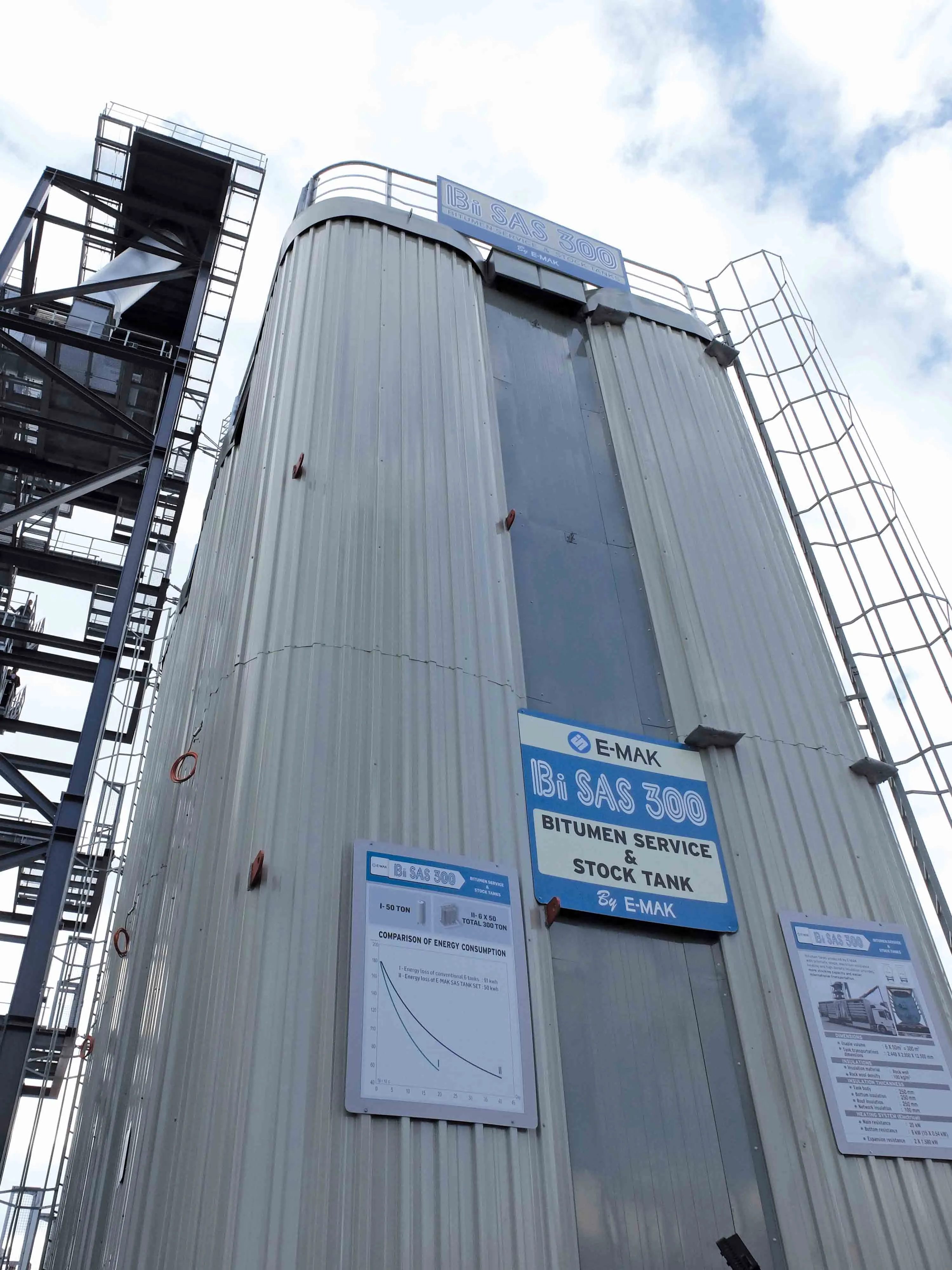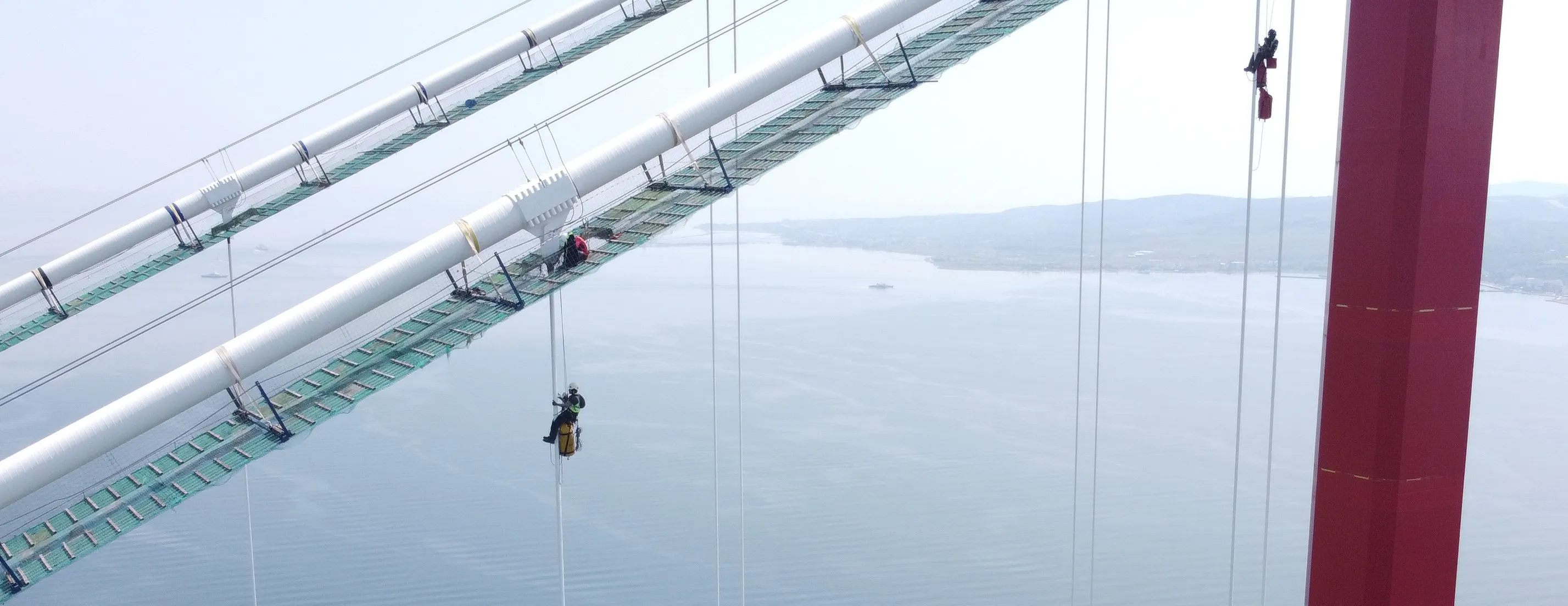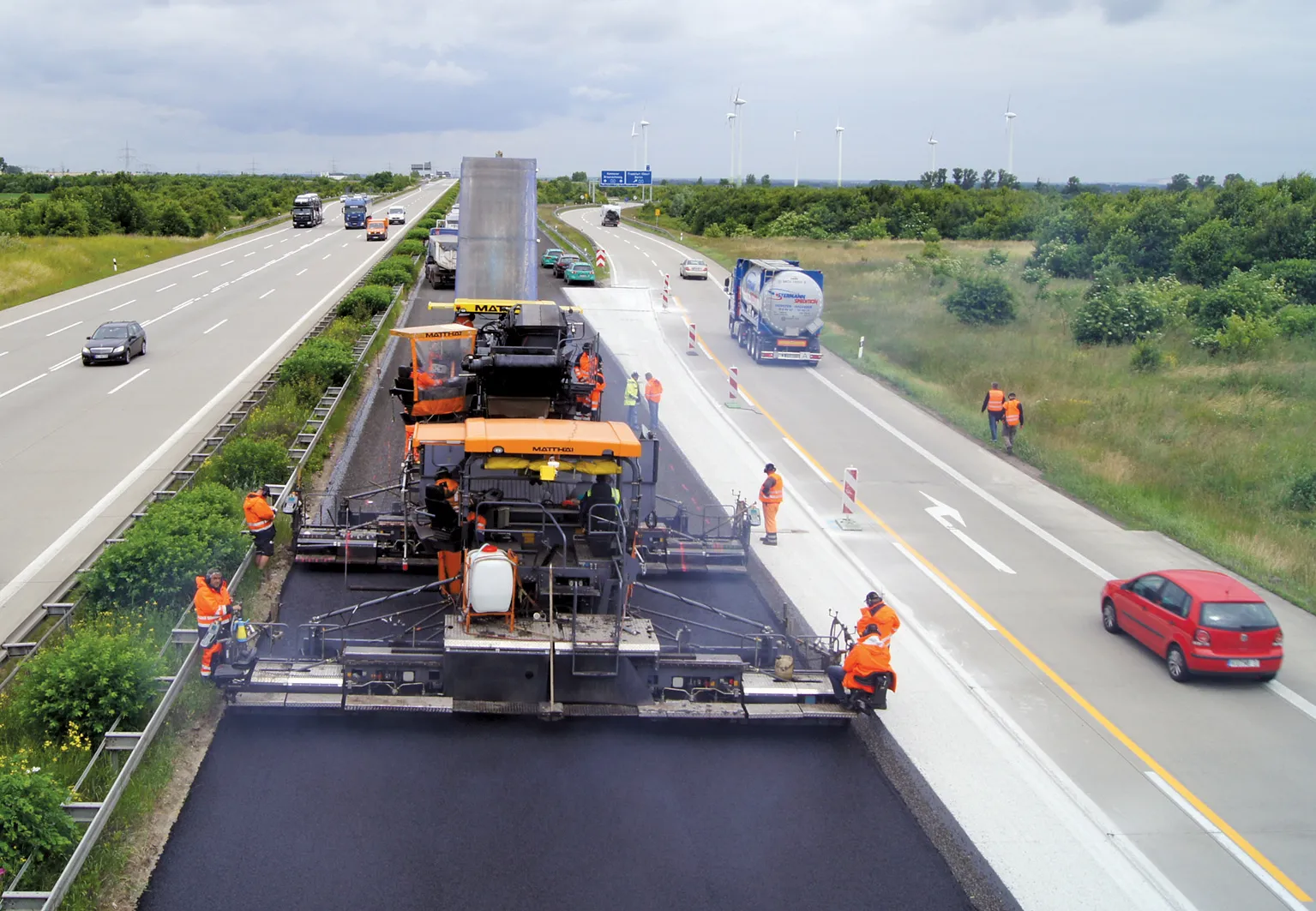Highways need not be a blight on the countryside that many people, urban planners included, believe they will always be. By Bram Miller, director, and Martin Broderick, environmental consultant, at Ramboll Environ
While the world’s highway networks bring undoubted economic and social benefits, they are generally perceived to lead to negative environmental impacts. Some may consider this an unfair reputation, but it is difficult to argue that in the majority of cases both the construction and operation of
March 21, 2016
Read time: 7 mins

Highways need not be a blight on the countryside that many people, urban planners included, believe they will always be. By Bram Miller, director, and Martin Broderick, environmental consultant, at 6801 Ramboll Environ
While the world’s highway networks bring undoubted economic and social benefits, they are generally perceived to lead to negative environmental impacts. Some may consider this an unfair reputation, but it is difficult to argue that in the majority of cases both the construction and operation of highway networks do not have a detrimental environmental impact.
However, this need not necessarily be the case. Initiatives are already being implemented around the world that aim to change this legacy. Through a combination of ambition, lateral thinking and commitment it should be possible to achieve a step change in reducing these impacts - and potentially even for our highways to provide an overall environmental improvement.
It is anticipated that the growing pace of technological change will be one of the major drivers for the transport sector and the history of technological progress to date provides evidence that change is exponential rather than linear. Looking at the past 40 years, vehicles and transport-related technologies have advanced dramatically. However, highways themselves have arguably failed to evolve at the same pace.
In terms of reducing the environmental impact of highway networks, research is either already underway, or at least being discussed, to investigate how technological advances can achieve ever more effective mitigation measures. Existing highway structures can potentially be adapted to mitigate their environmental impact, through means such as adapting gantries to enable easier passage by small mammals and helping improve biodiversity connectivity.
Meanwhile, in both the UK and the Netherlands the use of canopy-like structures, or adapted environmental barriers, to increase the dispersion of air pollutants generated by vehicles is already being looked at. Photovoltaic noise barriers are also being developed and trialled by various organisations throughout Europe. This includes a current initiative by the UK Government’s8100 Highways England to develop designs for noise barriers that incorporate photovoltaic power generation for stretches of the M40 motorway, where noise pollution is a particular issue.
Other mitigation measures to increase or maintain ecological connectivity are already known to be effective, and are seeing increasing uptake. Green bridges can be considered within the design of new roads or retrospectively incorporated within existing infrastructure, providing the opportunity to better integrate roads and railways into their surrounding landscape, reduce visual impact and retain continuity of important landscape features – all while ensuring biodiversity impacts are reduced.
Mitigation measures for highway networks often tend to focus on indirect impacts associated with the network. However direct operations on the network in terms of construction and maintenance should also be considered when trying to reduce environmental impact.
Concrete is an integral part of the highway industry. Indeed, some observers believe that the only product society consumes more of by volume is water. The environmental impacts associated with its manufacture are well understood - 8% of global emissions are attributed to this process. Because of this, any means of extending the life of this material would offer an opportunity to reduce associated environmental impacts of its manufacture.
European researchers are involved in the development of self-healing concrete, whereby dormant bacteria are mixed and distributed evenly throughout the concrete. Rainwater or atmospheric moisture entering the concrete through cracks activates bacteria which produce limestone that eventually repairs the cracks.
Effective use of big data is also becoming more prevalent and its application in transport networks has significant potential to reduce the impact of network operations and maintenance. Real-time network movements are already available in the UK where they provide the opportunity to model future traffic scenarios. Such systems are invaluable as design tools for network operators to design traffic management and road layouts that take into account current and future traffic volumes.
When considering that the UK strategic road network makes up just 2% of the total road network but carries a third of all UK motor vehicle traffic, the potential reduction in emissions through integrated control is significant.
However, apart from leading edge technology and design, a firm financial commitment is needed to mitigate environmental impacts. To this end, the UK Government, to upgrade the English strategic road network, has committed US$428 million to improve environmental impacts, and nearly $107 million to address air quality issues. This is enabling a step-change for environmental performance of the network that is going beyond normal regulatory requirements. The initiative is starting to demonstrate that different approaches to allocation of funding, with more emphasis on environmental performance, have the potential to make a real difference to the environment.
In France, government policy now requires 1% of a project’s budget be allocated to regional economic development to ensure a lasting legacy following completion of the development. Designers of the iconic Millau Viaduct in southern France paid particular attention to landscape considerations and included expenses for the restitution of access roads built for the construction. These measures prevented the urbanisation of such a special natural site and attempted to limit any disturbance on biodiversity, heritage and landscape.
However, should governments and the transportation sector move away from mitigation and place focus on environmental enhancement when designing roads? A highways network links populations, so the incorporation of other services within the network through holistic planning and design can reduce the impact of alternative infrastructure networks.
Picture a network where energy, water and communication links are incorporated into one integrated network – disruption could be reduced through collaborative maintenance schedules and the visual impacts could be reduced though the elimination of redundant infrastructure.
But can we go beyond this? Could a highway network generate significant quantities of energy, rather than just be involved in its transmission?
Road surfaces in direct sunlight often have temperatures 15°C higher than the ambient air temperature. Summer surface temperatures in cities regularly reach 50°C. So the incorporation of thermal storage pipes or highly conductive materials beneath the road could potentially offer the means of heating surrounding buildings and providing hot water. This could simultaneously reduce the heat-island effect encountered in towns and cities through heat dissipation.
Beyond the developed world, enhancements can be considered for the developing world’s highways which could work to support local communities. Climate change has already been predicted to have the greatest impact upon poorer nations as a result of longer periods of drought and more unpredictable weather patterns, therefore the need to ensure resilience is essential.
A study in Mozambique by the African Community Access Programme highlighted the value of borrow pits, holes created during highway construction due to requirements for sand and stone. Borrow pits have since been referred to as road ponds because their storm water runoff provides local communities with water for domestic purposes, watering animals, irrigation and recreation. Such sources of water are particularly valuable in regions vulnerable to drought. Similarly in Cambodia, borrow pits are commonly used for small-scale aquaculture, providing much needed food.
Society is reaching a point where it is being recognised that a diverse array of multidisciplinary systems can offer the most long-term sustainable solutions, contributing to a more harmonious existence with our surrounding environment. There is a need to look beyond the everyday challenges associated with the operation of a highways network and consider the driving forces of change and how these might shape the roads and highways of the future.
In 2013, the American Society of Civil Engineers gave the country’s infrastructure a D+ grade for its overall condition. It also estimated that $3.6 trillion would be required over the next seven years to raise the grade to B. Such upgrades could provide the opportunity to reconsider how highways networks are managed and also ensure that the environment receives greater consideration when designing roads.
With the rapid evolution of electric and autonomous vehicles, highway networks are here to stay. However, it is time that their
social role is expanded beyond simply as a means of transportation. Highways don’t have to be part of the problem; they can be part of the solution.
While the world’s highway networks bring undoubted economic and social benefits, they are generally perceived to lead to negative environmental impacts. Some may consider this an unfair reputation, but it is difficult to argue that in the majority of cases both the construction and operation of highway networks do not have a detrimental environmental impact.
However, this need not necessarily be the case. Initiatives are already being implemented around the world that aim to change this legacy. Through a combination of ambition, lateral thinking and commitment it should be possible to achieve a step change in reducing these impacts - and potentially even for our highways to provide an overall environmental improvement.
It is anticipated that the growing pace of technological change will be one of the major drivers for the transport sector and the history of technological progress to date provides evidence that change is exponential rather than linear. Looking at the past 40 years, vehicles and transport-related technologies have advanced dramatically. However, highways themselves have arguably failed to evolve at the same pace.
In terms of reducing the environmental impact of highway networks, research is either already underway, or at least being discussed, to investigate how technological advances can achieve ever more effective mitigation measures. Existing highway structures can potentially be adapted to mitigate their environmental impact, through means such as adapting gantries to enable easier passage by small mammals and helping improve biodiversity connectivity.
Meanwhile, in both the UK and the Netherlands the use of canopy-like structures, or adapted environmental barriers, to increase the dispersion of air pollutants generated by vehicles is already being looked at. Photovoltaic noise barriers are also being developed and trialled by various organisations throughout Europe. This includes a current initiative by the UK Government’s
Other mitigation measures to increase or maintain ecological connectivity are already known to be effective, and are seeing increasing uptake. Green bridges can be considered within the design of new roads or retrospectively incorporated within existing infrastructure, providing the opportunity to better integrate roads and railways into their surrounding landscape, reduce visual impact and retain continuity of important landscape features – all while ensuring biodiversity impacts are reduced.
Mitigation measures for highway networks often tend to focus on indirect impacts associated with the network. However direct operations on the network in terms of construction and maintenance should also be considered when trying to reduce environmental impact.
Concrete is an integral part of the highway industry. Indeed, some observers believe that the only product society consumes more of by volume is water. The environmental impacts associated with its manufacture are well understood - 8% of global emissions are attributed to this process. Because of this, any means of extending the life of this material would offer an opportunity to reduce associated environmental impacts of its manufacture.
European researchers are involved in the development of self-healing concrete, whereby dormant bacteria are mixed and distributed evenly throughout the concrete. Rainwater or atmospheric moisture entering the concrete through cracks activates bacteria which produce limestone that eventually repairs the cracks.
Effective use of big data is also becoming more prevalent and its application in transport networks has significant potential to reduce the impact of network operations and maintenance. Real-time network movements are already available in the UK where they provide the opportunity to model future traffic scenarios. Such systems are invaluable as design tools for network operators to design traffic management and road layouts that take into account current and future traffic volumes.
When considering that the UK strategic road network makes up just 2% of the total road network but carries a third of all UK motor vehicle traffic, the potential reduction in emissions through integrated control is significant.
However, apart from leading edge technology and design, a firm financial commitment is needed to mitigate environmental impacts. To this end, the UK Government, to upgrade the English strategic road network, has committed US$428 million to improve environmental impacts, and nearly $107 million to address air quality issues. This is enabling a step-change for environmental performance of the network that is going beyond normal regulatory requirements. The initiative is starting to demonstrate that different approaches to allocation of funding, with more emphasis on environmental performance, have the potential to make a real difference to the environment.
In France, government policy now requires 1% of a project’s budget be allocated to regional economic development to ensure a lasting legacy following completion of the development. Designers of the iconic Millau Viaduct in southern France paid particular attention to landscape considerations and included expenses for the restitution of access roads built for the construction. These measures prevented the urbanisation of such a special natural site and attempted to limit any disturbance on biodiversity, heritage and landscape.
However, should governments and the transportation sector move away from mitigation and place focus on environmental enhancement when designing roads? A highways network links populations, so the incorporation of other services within the network through holistic planning and design can reduce the impact of alternative infrastructure networks.
Picture a network where energy, water and communication links are incorporated into one integrated network – disruption could be reduced through collaborative maintenance schedules and the visual impacts could be reduced though the elimination of redundant infrastructure.
But can we go beyond this? Could a highway network generate significant quantities of energy, rather than just be involved in its transmission?
Road surfaces in direct sunlight often have temperatures 15°C higher than the ambient air temperature. Summer surface temperatures in cities regularly reach 50°C. So the incorporation of thermal storage pipes or highly conductive materials beneath the road could potentially offer the means of heating surrounding buildings and providing hot water. This could simultaneously reduce the heat-island effect encountered in towns and cities through heat dissipation.
Beyond the developed world, enhancements can be considered for the developing world’s highways which could work to support local communities. Climate change has already been predicted to have the greatest impact upon poorer nations as a result of longer periods of drought and more unpredictable weather patterns, therefore the need to ensure resilience is essential.
A study in Mozambique by the African Community Access Programme highlighted the value of borrow pits, holes created during highway construction due to requirements for sand and stone. Borrow pits have since been referred to as road ponds because their storm water runoff provides local communities with water for domestic purposes, watering animals, irrigation and recreation. Such sources of water are particularly valuable in regions vulnerable to drought. Similarly in Cambodia, borrow pits are commonly used for small-scale aquaculture, providing much needed food.
Society is reaching a point where it is being recognised that a diverse array of multidisciplinary systems can offer the most long-term sustainable solutions, contributing to a more harmonious existence with our surrounding environment. There is a need to look beyond the everyday challenges associated with the operation of a highways network and consider the driving forces of change and how these might shape the roads and highways of the future.
In 2013, the American Society of Civil Engineers gave the country’s infrastructure a D+ grade for its overall condition. It also estimated that $3.6 trillion would be required over the next seven years to raise the grade to B. Such upgrades could provide the opportunity to reconsider how highways networks are managed and also ensure that the environment receives greater consideration when designing roads.
With the rapid evolution of electric and autonomous vehicles, highway networks are here to stay. However, it is time that their
social role is expanded beyond simply as a means of transportation. Highways don’t have to be part of the problem; they can be part of the solution.









